The Gift of Caring
The Gift of Caring
Saving Our Parents from the Perils of Modern Healthcare
Marcy Cottrell Houle, MS, and Elizabeth Eckstrom, MD, MPH
TAYLOR TRADE PUBLISHING
Lanham Boulder New York London
Published by Taylor Trade Publishing
An imprint of The Rowman & Littlefield Publishing Group, Inc.
4501 Forbes Boulevard, Suite 200, Lanham, Maryland 20706
www.rowman.com
Unit A, Whitacre Mews, 26-34 Stannary Street, London SE11 4AB
Distributed by NATIONAL BOOK NETWORK
Copyright 2015 by Marcy Cottrell Houle and Elizabeth Eckstrom
VIII, from This Day: Collected and New Sabbath Poems by Wendell Berry, by Wendell Berry. Used by permission of Counterpoint Press.
All rights reserved . No part of this book may be reproduced in any form or by any electronic or mechanical means, including information storage and retrieval systems, without written permission from the publisher, except by a reviewer who may quote passages in a review.
British Library Cataloguing in Publication Information Available
Library of Congress Cataloging-in-Publication Data
Houle, Marcy Cottrell, 1953
The gift of caring : saving our parents from the perils of modern healthcare / by Marcy Cottrell Houle, MS, and Elizabeth Eckstrom, MD, MPH.
pages cm
Summary: In the next few years, 66 million Americans will be caring for an aging parent. Over eighty-five is the nations fastest growing age group, a trend that keeps growing as ten thousand Americans turn sixty-five every day. The desire to help our elders navigate health issues is clear and universalhow to assure proper care and a good ending is not. Combining adroit storytelling skills with expert advice, this book brings the reader into the all-too-familiar scenarios facing our aging parents and offers answers to questions we may not know to ask until its too late Provided by publisher.
Includes bibliographical references.
ISBN 978-1-4930-1003-5 (hardback) ISBN 978-1-63076-098-4 (electronic) 1. Aging parentsCare. 2. Aging parentsHealth and hygiene. 3. Aging parentsMedical care. 4. Adult children of aging parents. I. Eckstrom, Elizabeth N. II. Title.
HQ1063.6.H68 2015
362.19897dc23
2015000560
 The paper used in this publication meets the minimum requirements of American National Standard for Information SciencesPermanence of Paper for Printed Library Materials, ANSI/NISO Z39.48-1992.
The paper used in this publication meets the minimum requirements of American National Standard for Information SciencesPermanence of Paper for Printed Library Materials, ANSI/NISO Z39.48-1992.
Printed in the United States of America
To my parents,
whom I loved.
To Sheri, Gladys, and Orlando,
faithful caregivers and friends.
And to John, Emily, and Jennifer,
who walked this journey with me
and proved what a precious thing
is family.
To love or to have loved, that is enough.
Ask nothing further.
Victor Hugo, Les Miserables
Foreword
Jennie Chin Hansen, Former CEO of American Geriatrics Society, Past President of AARP
T his book is a lyrical, intimate love story of a daughter, Marcy, and how she rose and struggled to provide dignified care for each of her parents over a fourteen-year period. Its a journaling of care as she lived through the journey of their changeswith her father from Alzheimers disease and her mother from a slow but progressive frailty. The reader travels through the struggles, triumphs, advocacy, tears, and conflicts of a devoted daughter juggling the everyday needs of herself, her understanding children, and her supportive spouse, coupled with managing a number of personal home workers from the divine to the harrowing. What makes this caregiving narrative different and special are the companion chapters written by an expert geriatrician who provides both reflection on and knowledge of what transpires in every few chapters written by Marcy.
This is a unique form of riveting narrative that gives us, as members of the general public, a useable medical understanding and practical tips that will help us anticipate, appreciate, and prepare for a more effective journey as we approach the universal care-providing experience we will all encounterwhether with our loved ones or when we ourselves will someday be given care. This book is a gift. It is written to assure the best possible dignity while also advancing the best in care as we travel the journey of life and living, until our final chapter is completed.
I
The Airplane Diaries
For age is opportunity no less than youth itself
though in another dress.
For as the evening twilight fades away
the sky is filled with stars
invisible by day.
Henry Wadsworth Longfellow
Colliding Worlds
I never used to worry about getting old. Most younger people dont, but I had extra proof that aging was not a problem. You see, I was a later in life child; my parents had me when they were forty. My mother used to laugh that she was the oldest mother at the first grade PTA meetings. She was on the leading edge to fifty while the majority of the parents were barely in their thirties, if that.
I always thought that she had the last laugh, though, for of all my friends parents, most considerably younger than mine, my mother and father were the most active, energetic, and fun people I knew. The word retire never entered their vocabulary. If he could have, my father would have continued working until the day he died. My mother did continue until she passed away, as a helpmeet to my adventuresome father and a mother of three very active girls.
My father was a doctor. Aside from my mother, the love of his life, and his family, his deepest affection was for the practice of medicine. It began when he was eight years old and visited an uncle, a surgeon, in San Francisco. At that moment, he knew that was what he wanted to be. During medical school, he refined his passion to orthopedics. There was nothing he enjoyed more, evidenced by his entreating his daughters to follow in his footsteps and all become doctors. None of us did, which he felt was a shame. The satisfaction he received from treating ailing people was deep and abiding and, in his mind, nothing could top it.
But there was more to it than just doing surgeries. His special concern was for those people who were too often cast off by society. For decades, he treated disabled children, predominantly those with cerebral palsy, and in the 1950s established the Child Development and Rehabilitation Center at Oregon Health and Sciences University, where he was a part-time professor. Teaming with Shriners Hospital, the program treated disabled children from birth to twenty-one years of age. It still exists today. After spending twenty years with these patients, my father often developed a close association with them and their families.
Another segment of society was too often neglected, he thought. Through the years I saw him pay special attention to older adults. In his era, when most people turned eighty and broke their hips, a surgeon wouldnt touch them. Too risky. But my father said he firmly believed that if these old people could safely be fixed with an artificial hip and be relieved of severe pain and immobility for the remainder of their lives, it was worth the chance. He was successful, and his patients loved him. Many of those with repaired hips lived to be in their nineties and with a renewed quality of life.
Practicing good health habits was important to my father, and so it trickled down to all of us. Fitness was always a big part of his life. He loved to walk and believed that his patients and family should feel this way too. He encouraged everyone to stay active; it didnt matter how old they were. In this, he was a little bit of a revolutionary, being ahead of his time.
Living in Portland, Oregon, where the jogging fad first began with Adidas and Nike, my father took notice. Initially, it was not just for increased fitness. It was because of the shoes. After observing hundreds of patients in his practice, he believed that a large proportion of foot problemsbunions, hammer toes, rolled anklescould be attributed to wearing the wrong kind of footwear. This was especially true with his older patients, many of whom were experiencing problems with walking. He talked to distributors and shoe suppliers and made a display in his waiting room of a sampling of three or four models of Adidas and Nike shoes. Before long, running shoes became one of my fathers signature prescriptions for people with back, knee, and foot pain.
Next page



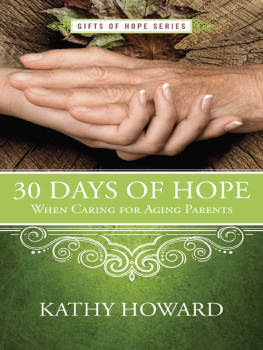
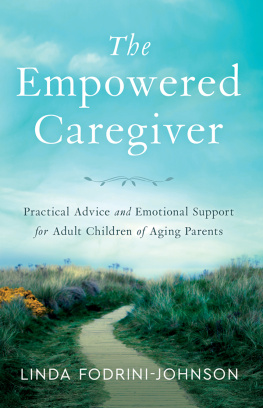
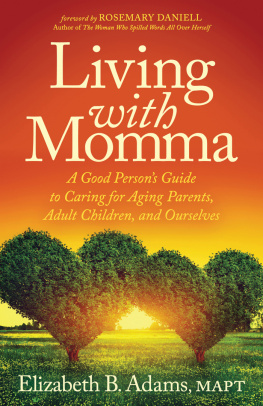
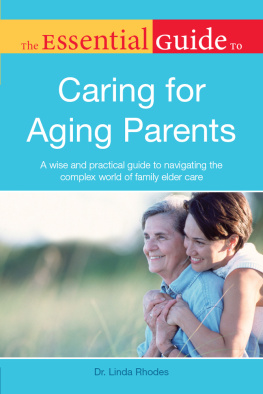
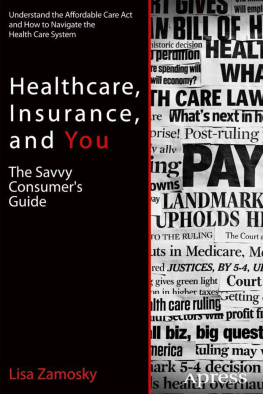
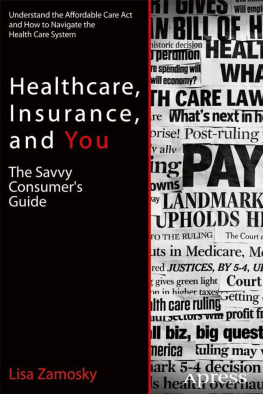
 The paper used in this publication meets the minimum requirements of American National Standard for Information SciencesPermanence of Paper for Printed Library Materials, ANSI/NISO Z39.48-1992.
The paper used in this publication meets the minimum requirements of American National Standard for Information SciencesPermanence of Paper for Printed Library Materials, ANSI/NISO Z39.48-1992.